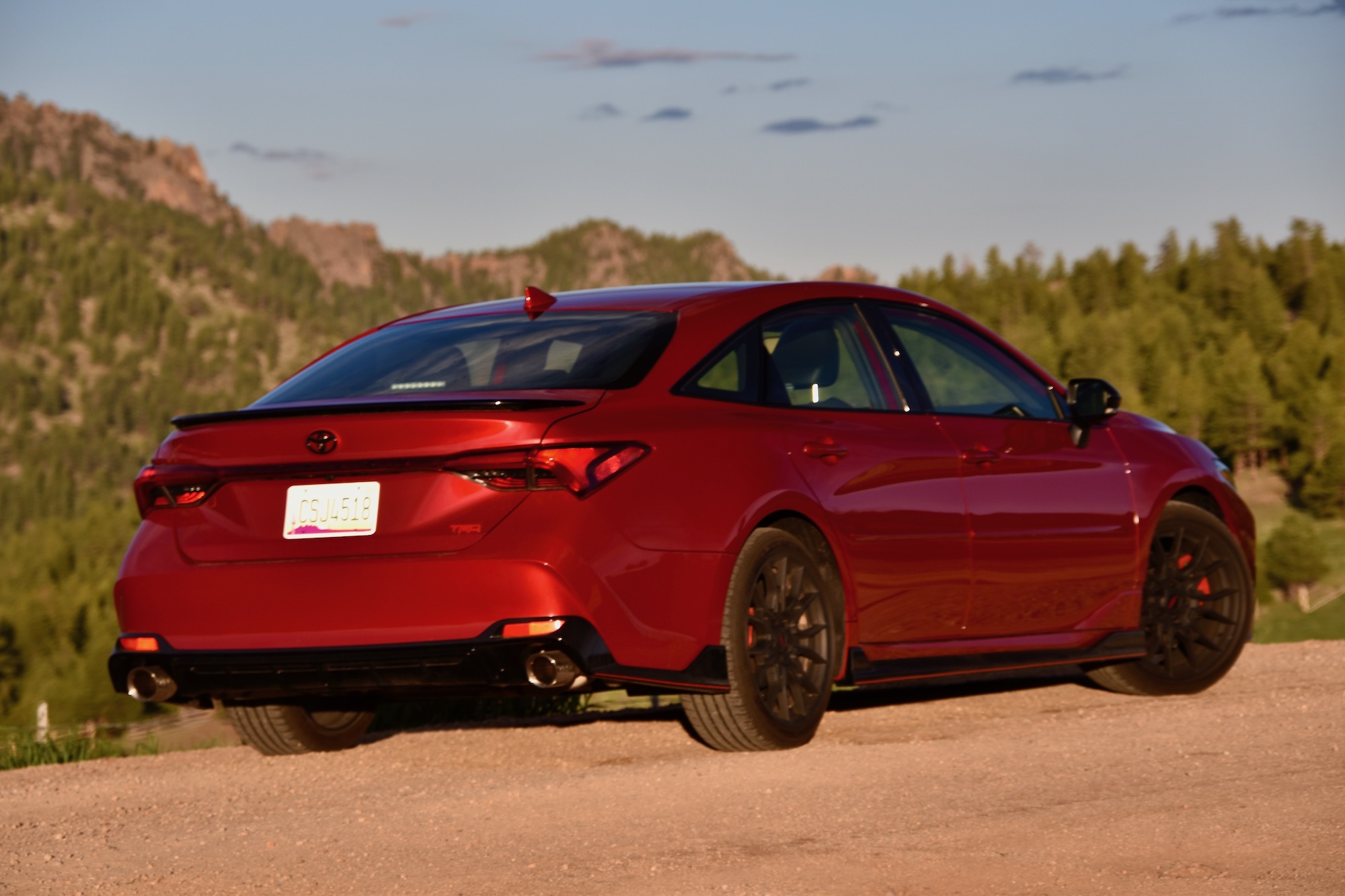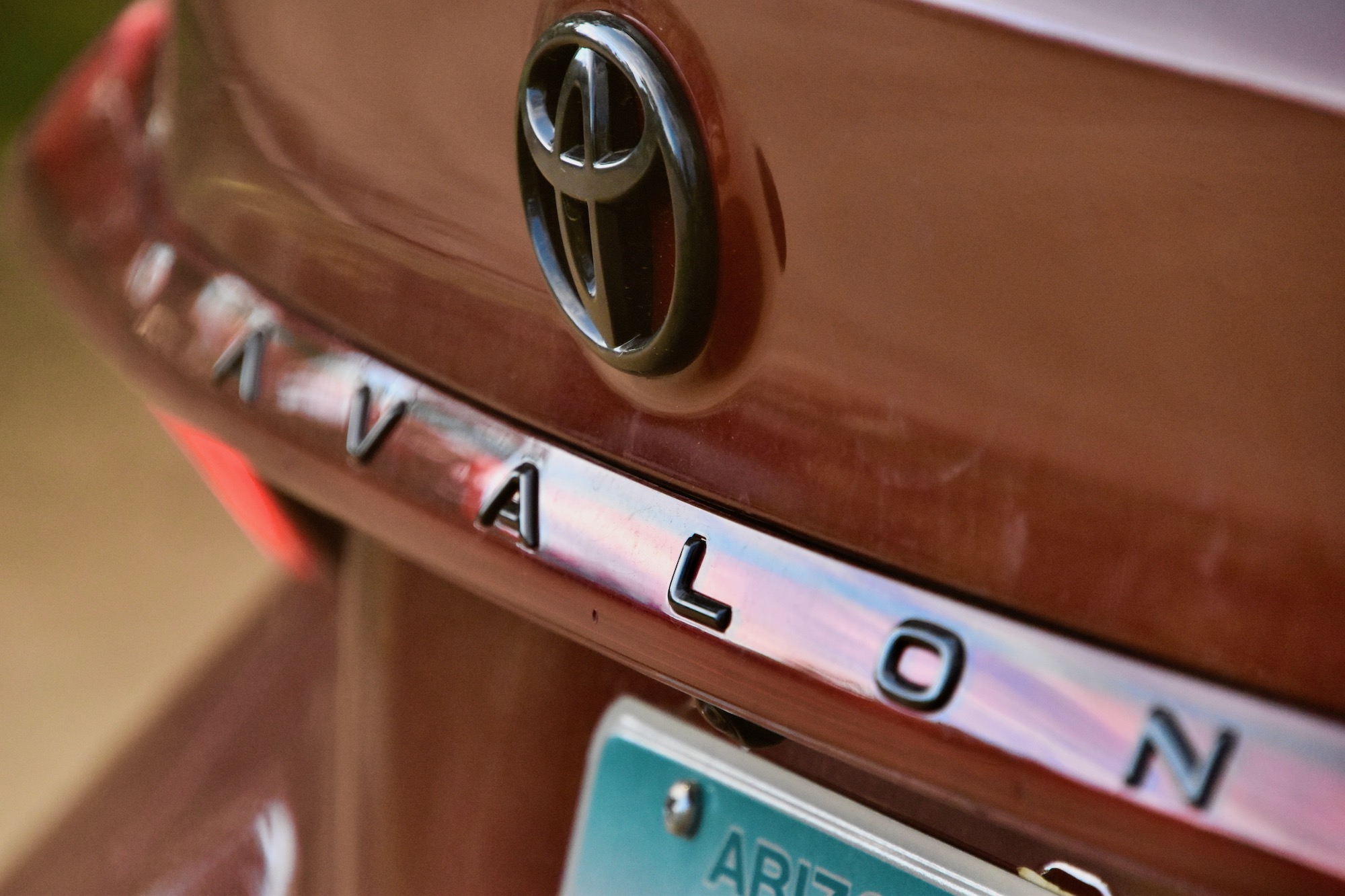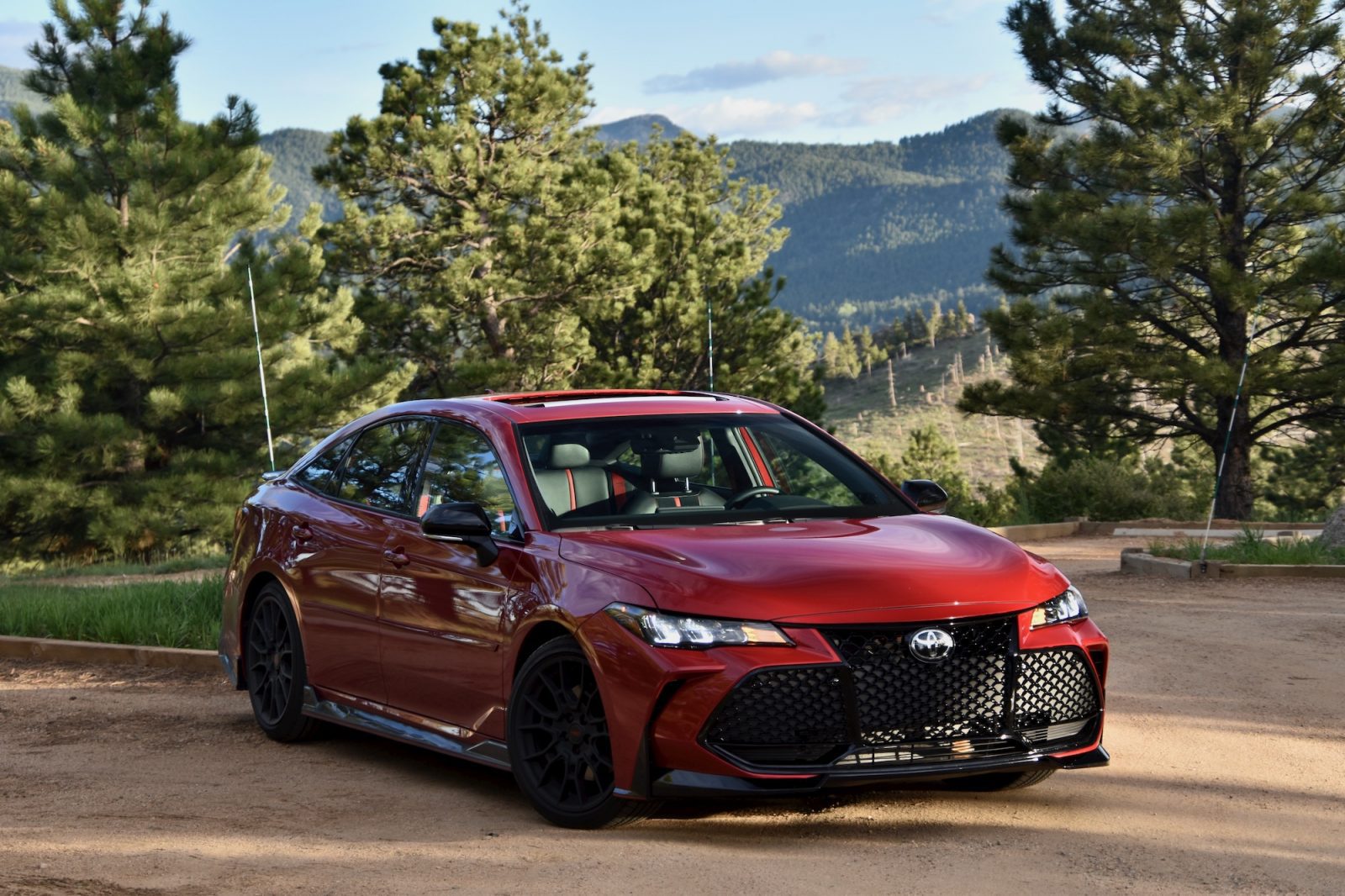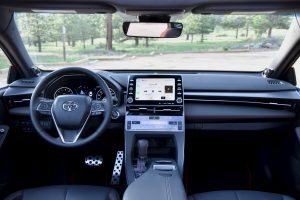On paper, the Toyota Avalon seems like possibly the least appropriate candidate for a sports sedan. It’s a full-size, front-drive highway cruiser that’s associated with racing as closely as Everclear is with responsible drinking. But Toyota’s sick of being seen as the bland, responsible brand that always stops at two drinks, which is why it has promised the Avalon of all models is leading Toyota’s charge toward a TRD version of every model in its lineup. So, what does the Avalon TRD tell us to expect about suddenly sporty-anew Toyota? Having spent a week in one, I say we can expect a valiant effort… But perhaps not a flawless execution.
Quick Specs & Info |
|||
| 2020 Toyota Avalon | Class: Fullsize sedan | ||
| Base Model | As Tested: TRD | ||
| Powertrain | 3.5L naturally aspirated V6, 8spd automatic | Powertrain | 3.5L naturally aspirated V6, 8spd automatic |
| Base MSRP | $35,875 | MSRP as tested | $45,192 |

Overview
More or less a premium Camry in spirit, the Avalon is smoother, plusher, and more spacious, but still economical and modest—that outrageous body kit notwithstanding. It makes darn sure you know you’re looking at the TRD model, even if it’s one painted this gorgeous shade of Supersonic Red, Supersonic Red, which overshadows the aero kit’s red styling highlights, and obscures the red TRD badge—it could really do with another primary color paint option. It wouldn’t be worthy of said badge if bodywork was all that made up the TRD package, and it isn’t; the Avalon TRD gets added chassis bracing, “track-tuned” suspension, bigger front brakes, and a less reserved cat-back exhaust.
Driving
On their own, the above are almost enough to turn the Avalon TRD into an authentic sports sedan. Its cornering ability generously exceeds what you’d expect of an Avalon, though its limits aren’t so lofty that it takes recklessness to find them. In Sport mode, the steering gets as heavy as an Avalon’s statistically average 66-year-old buyer would be able to handle, and brake feel is up there with some of Toyota’s best (and that’s coming from the owner of two MR2s). Response from the other pedal, however, is less pleasing; the 3.5-liter V6’s 301 horsepower and 267 pound-feet of torque are ample, and help the Avalon outperform its rated MPG—I averaged 26—but the eight-speed automatic transmission does its utmost to make sure you get the latter more often than the former. Even in Sport, it takes its sweet time to kick down, and upshifts only feel quick enough in straight-line dashes off the light. They’re just not quick enough to tempt you to drive in Sport mode 24/7, which a good sports sedan should really do.
Design, Interior, Tech
While the Avalon TRD’s exterior writes a check its performance just barely can’t cash, it’s still an Avalon underneath, meaning it’s one of the most comfortable cars you can buy for under $50,000. Leg and headroom are ample front and back, not a single surface feels low-rent, and though the seat ergonomics require some adjustment, the gimmicks that are red seatbelts, upholstery highlights, and TRD floormats help you overlook them.
These also serve to distract from the infotainment screen, which looks like it’s peeling off the dash, and could be more responsive, though it does speak Apple CarPlay and Android Auto, so all’s forgiven. Any of the five phones you can have plugged into one of the Avalon’s equal number of USB ports can transmit audio over bluetooth to the optional 14-speaker JBL sound system, which, like the rest of the Avalon’s innards, are good value for money. Toyota Safety Sense could perhaps stand to be more intrusive, as it really only beeps at you when you come near the lane dividers, though mercifully, Toyota’s hand-off approach means you can still turn off traction control, and squeal the tires from a dead stop.
Competition
Most sports sedans in the 40-grand neighborhood are compacts from premium brands, setting the Avalon TRD apart on grounds of size alone—never mind its driven wheels or pedestrian badge. An upper-trim BMW 3 series like a 330i or 335i is the obvious first choice, though it’s probably a bit conventional for the kind of person that would even consider a dark horse like the Avalon TRD in the first place. The Infiniti Q50 and Kia Stinger GT seem more the Avalon TRD’s ilk, though both trade some interior refinement for rear-wheel drive, and in the latter’s case, more power. Spending over 40 grand on a top-spec Subaru WRX STI is—though ill-advised—also an option.
Pluses
- Patently absurd in a way that normally scares off carmakers—the Avalon TRD will stand out no matter where you take it.
- No compromises to comfort and 30-plus highway MPG make it a marvelous road-tripper.
- Handling handily exceeds expectations.
Minuses
- Those jutting side skirts are easy to step on and possibly break, or just drag your socks on as you’re getting out—not good in muddy weather.
- Powertrain response could stand to be sharper in Sport mode.
- Though fun, it doesn’t feel like the Avalon at its best.
Conclusion
Despite TRD doing its utmost to turn the Avalon into a sports sedan, no amount of motorsport expertise can overcome a transmission that was designed without lap times in mind. It blunts the Avalon TRD just enough that you’re better off figuring out whether your priorities lie in the front seat, or in the back; with a thrilling driving experience or outright comfort. If you go out of your way to take the twisties home, you won’t regret signing for the aforementioned Kia, or if you can afford two cars, a Toyota GR Supra. But if your idea of a nice drive involves your favorite album and a smooth ride instead of a loud exhaust and G-forces, the Avalon’s still a solid pick—just look into the more focused Touring and Hybrid Limited trims first. As much as I love the TRD version for existing, I struggle to believe this is the Avalon at its best.











